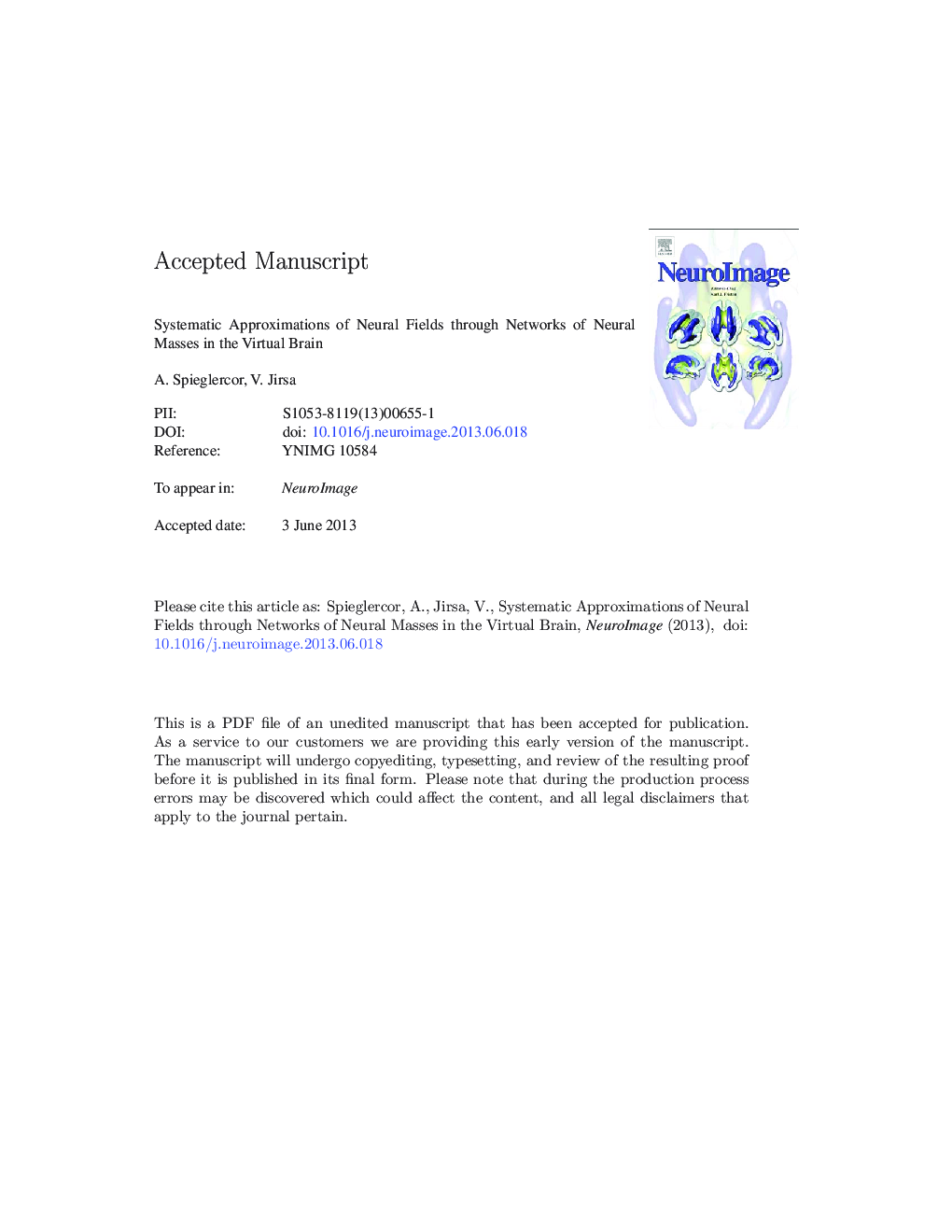| Article ID | Journal | Published Year | Pages | File Type |
|---|---|---|---|---|
| 6028236 | NeuroImage | 2013 | 69 Pages |
Abstract
Full brain network models comprise a large-scale connectivity (the connectome) and neural mass models as the network's nodes. Neural mass models absorb implicitly a variety of properties in their constant parameters to achieve a reduction in complexity. In situations, where the local network connectivity undergoes major changes, such as in development or epilepsy, it becomes crucial to model local connectivity explicitly. This leads naturally to a description of neural fields on folded cortical sheets with local and global connectivities. The numerical approximation of neural fields in biologically realistic situations as addressed in Virtual Brain simulations (see http://thevirtualbrain.org/app/ (version 1.0)) is challenging and requires a thorough evaluation if the Virtual Brain approach is to be adapted for systematic studies of disease and disorders. Here we analyze the sampling problem of neural fields for arbitrary dimensions and provide explicit results for one, two and three dimensions relevant to realistically folded cortical surfaces. We characterize (i) the error due to sampling of spatial distribution functions; (ii) useful sampling parameter ranges in the context of encephalographic (EEG, MEG, ECoG and functional MRI) signals; (iii) guidelines for choosing the right spatial distribution function for given anatomical and geometrical constraints.
Related Topics
Life Sciences
Neuroscience
Cognitive Neuroscience
Authors
A. Spiegler, V. Jirsa,
